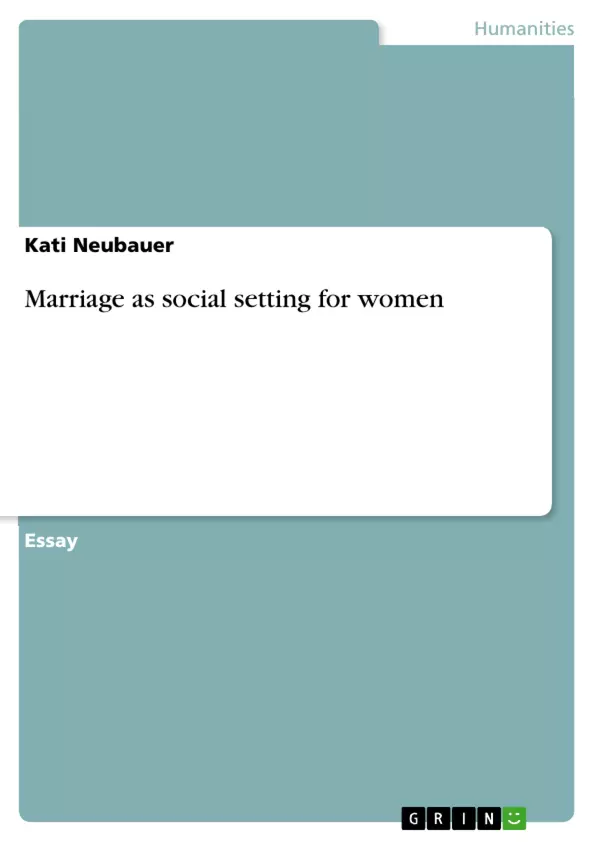In Hinduism marriage is the only accepted institution men and women can live together. This essay asks how marriage does work both for and against women in Hinduism.
Inhaltsverzeichnis (Table of Contents)
- Marriage as social setting for women
Zielsetzung und Themenschwerpunkte (Objectives and Key Themes)
This text explores the role of marriage in traditional Hindu society, focusing specifically on the social and religious expectations placed upon women within the institution of marriage.
- The importance of childbirth and its impact on a woman's social standing
- The relationship between a woman's sexuality and her social and religious obligations
- The power dynamics within marriage and the hierarchical structure of Hindu households
- The consequences of infertility, widowhood, and divorce for women in traditional Hindu society
- The role of women in maintaining social order and religious continuity within Hinduism
Zusammenfassung der Kapitel (Chapter Summaries)
The text analyzes the implications of marriage for women in traditional Hinduism, examining its impact on their lives, roles, and social standing. The central theme revolves around the importance of childbirth and the associated pressures and responsibilities placed upon women.
Schlüsselwörter (Keywords)
The key themes and concepts explored in this text include: marriage in Hinduism, female roles, childbirth, sexuality, social hierarchy, power dynamics, infertility, widowhood, divorce, religious obligations, social expectations, and the continuity of life in samsara.
- Quote paper
- Kati Neubauer (Author), 2008, Marriage as social setting for women, Munich, GRIN Verlag, https://www.grin.com/document/133374



